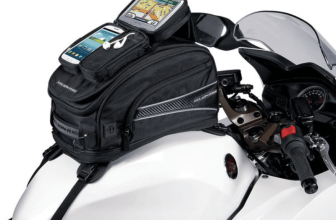What Is Torque In A Bike?
Answer: Torque refers to the rotational force generated by a motorcycle’s engine or rider, quantified in units such as Newton meters (Nm) or pound-feet (lb-ft).
Definition of torque: Torque represents the degree of rotational force a motorcycle’s engine or rider can generate, indicating the extent of twisting power. Typically, torque is quantified in units such as Newton meters (Nm) or pound-feet (lb-ft).
The significance of torque in motorcycles: Torque is a pivotal factor that shapes a bike’s overall performance. Bicycles possessing substantial torque excel in terms of acceleration and uphill maneuverability, whereas those with lower torque might encounter difficulties on steep inclines. Furthermore, torque is intricately linked to a bike’s power output, with greater torque translating to increased power. Comprehending the concept of torque and how to enhance it can markedly enhance a rider’s satisfaction and prowess while riding their bike.
II. Impact of Torque on Motorcycle Performance The Correlation between Torque and Power:
Torque and power share a close-knit connection, as torque gauges rotational force, while power quantifies the work accomplished over time. Increased torque equates to greater power, and conversely, reduced torque results in less power. Motorcycles boasting high torque exhibit superior acceleration and overall performance, while those with lower torque may encounter challenges when navigating steep inclines.
Influence of Torque on Acceleration: Torque assumes a pivotal role in shaping a motorcycle’s acceleration, as heightened torque leads to improved acceleration. This connection arises from torque’s direct association with the engine’s twisting force, which drives the bike forward. Consequently, a motorcycle endowed with substantial torque will exhibit swiffer acceleration compared to one with lower torque.
Significance of Torque in Uphill Riding: Torque holds paramount importance when it comes to conquering uphill terrains. It dictates a motorcycle’s capacity to ascend steep inclines efficiently. A motorcycle blessed with ample torque can ascend hills with greater swiftness and maintain momentum, while a bike with diminished torque might face challenges, risking a loss of speed on such uphill journeys. Hence, when navigating hilly landscapes, the consideration of torque becomes a fundamental aspect for riders.
III. Determining Torque in Bikes Approaches to Gauge Torque in Bikes:
Torque assessment in bikes can be accomplished through several techniques, including the utilization of a torque wrench, dyno (dynamometer), or strain gauge. A torque wrench is a conventional tool used for quantifying torque in bolts and various fasteners. Dyno, an abbreviation for dynamometer, is a method frequently employed in professional bike shops to measure torque. In addition, a strain gauge can be applied to determine the torque associated with a bike’s crankset or the component to which the pedals are affixed.
Instruments for Torque Measurement in Motorcycles: The primary tools utilized for measuring torque in motorcycles are torque wrenches and dynamometers, often referred to as dynos. Torque wrenches are employed to gauge the torque applied to bolts and various fasteners, whereas dynos are instrumental in quantifying the torque generated by the engine and transmission. Additionally, there are specialized tools like strain gauges designed to measure torque on specific bike components.
Significance of Precise Torque Measurements: Precise torque measurements hold paramount importance in guaranteeing the proper functionality of all bike components and facilitating necessary adjustments for peak performance. Inaccurate torque measurements can result in problems like component loosening or breakage, posing potential hazards during rides. Furthermore, precise torque measurements play a pivotal role in optimizing a bike’s overall performance, thereby enhancing the rider’s experience.
IV. Influential Factors on Bike Torque Engine Characteristics and Components:
The torque output of a bike can be substantially influenced by the engine’s design and its constituent elements. Sophisticated engine designs, exemplified by larger displacements or multi-cylinder configurations, generally yield greater torque compared to simpler counterparts. Furthermore, the choice of materials and the quality of components within the engine, such as the crankshaft and pistons, can also exert an impact on torque production.
Transmission and Gear Mechanisms: The torque output of a bike is further influenced by its transmission system and gearing. Bicycles equipped with multiple gears or a broad gear ratio spectrum possess greater versatility in terms of torque delivery. Moreover, the type of transmission, whether manual or automatic, can also impact the bike’s torque output.
Rider’s Weight and Pedaling Technique: The role of the rider and their pedaling approach can exert an influence on torque output. Heavier riders necessitate more torque to sustain a particular speed, whereas lighter riders require less. Furthermore, a rider’s pedaling technique, including maintaining a suitable cadence and distributing power evenly, can also have an impact on torque output. By adhering to sound pedaling practices, a rider can fine-tune the bike’s torque output for optimal performance.
V. Conclusion Recap of Key Insights:
Torque, as a gauge of a bike’s rotational force, holds a pivotal position in shaping its performance. Its intertwined relationship with power significantly influences aspects like acceleration and hill-climbing prowess. Precision in torque measurement emerges as a paramount requirement for maintaining the bike effectively and fine-tuning its performance. Furthermore, torque output is intricately tied to factors such as engine design, transmission and gearing, and the rider’s weight and pedaling technique, collectively shaping the biking experience.
Significance of Grasping Torque for Bike Maintenance and Performance Enhancement: A comprehensive understanding of torque, along with the ability to measure and enhance it, empowers riders to unlock their bikes’ full potential. Vigilant torque maintenance guards against problems like component failures and guarantees peak performance.
Additional Information Sources: A wealth of online resources including forums, videos, and articles offer in-depth insights into torque and its impact on bike performance. For personalized guidance and expertise, consulting with a professional mechanic or visiting a reputable bike shop can provide invaluable assistance in managing and optimizing torque for your specific bike.






